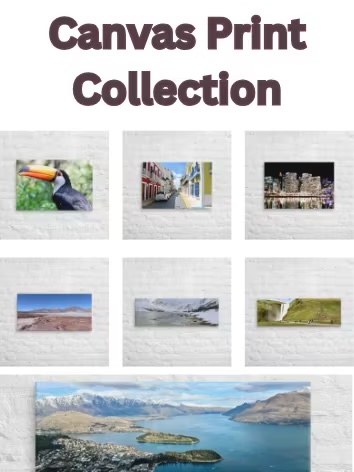Visiting the Hagia Sophia During a Layover

How to Visit the Hagia Sophia During a Layover
In December of 2022, I traveled from Marrakech, Morocco, to Nairobi, Kenya on Turkish Airlines. I was able to book a flight that had an overnight layover in Istanbul, Turkey. Knowing it wouldn’t be possible to see all of Istanbul during a long layover, I focused on the one site in Istanbul I’ve always wanted to visit, the Hagia Sophia. This page will focus on how to visit the Hagia Sophia during a layover.
The timing of my layover really only allowed me a chance to see one tourist attraction in Istanbul. My flight from Marrakech arrived in Istanbul at 11:45 pm. By the time I arrived at my hotel, it was well after 1:00 am. I was exhausted and knew I had to return to the airport around 3:30 pm, so I decided to sleep in until around 10:00 am.
To visit the Hagia Sophia during my layover, I booked a 1:00 pm tour. Booking a tour ensured that I would have the best experience visiting the Hagia Sophia, as a local guide would explain the history of this unique structure.

Visiting the Hagia Sophia During a Layover - Table of Contents
Disclaimer: Buzzin’ Around the World strives to provide accurate and up-to-date information based on our research at the time of publication. We respect all applicable laws and fair use principles. If you believe any information is incorrect or violates regulations, please contact us at buzzinaroundtheworld@gmail.com.
Affiliate Links and Reviews: We use affiliate links to generate income and may receive a commission at no additional cost to you when you use our links. We strive for honest and transparent reviews, even for products which we receive compensation.
Content Creation: Our content is based on our own travel experiences. All photos are our own unless otherwise stated. We sometimes utilize AI tools to assist with tasks like generating titles, summarizing content, and improving organization.
For more information: For more information, please click HERE to visit our private policy page. We can be reached at buzzinaroundtheworld@gmail.com.
About the Hagia Sophia - Is the Hagia Sophia a Church or a Mosque?
As a global studies teacher, the Hagia Sophia is one of my favorite structures in the world to teach about. The reason I enjoy teaching about the Hagia Sophia is that it shows some of the architectural differences between Christianity and Islam. Throughout its history, the Hagia Sophia has been a church, a mosque, and a museum.
The current Hagia Sophia is actually the third structure built in this location. The original church was built by Constantius II in 360 AD. In the early 400s, the original church burned to the ground.
The second church was built by Theodosius II in 415 AD. There are some remnants of the second church that are on display near the tourist entrance. This church was also destroyed by fire in 532 AD.


The current Hagia Sophia was built by Emperor Justinian I in 532 AD. After completion, the Hagia Sophia became the largest church in the world. It retained that status for almost 1,000 years until the Seville Cathedral in Spain opened in 1507.
When touring the Hagia Sophia, visitors will see a variety of Christian mosaics and Islamic geometric artwork. Typically, Muslims do not decorate their mosques with images of people. Instead, Muslims use geometric shapes and patterns. Since the Hagia Sophia was once a church and a mosque, it has examples of artwork from both religions.
Outside the main prayer area, Christian mosaics remain. The Vestibule Mosaic is located near the south entrance. Pictured below, this mosaic shows Mary and Jesus in the middle. To the left, Justinian is presenting Jesus with a model of the Hagia Sophia. To the right, Constantine is presenting Jesus the city of Constantinople (Istanbul.)

Another famous Christian mosaic found inside the Hagia Sophia is the Mosaic of Leo VI. This mosaic shows Leo VI bowing down to Jesus. Jesus is holding a script that says, “Peace be upon you. I am the light of the world.”

In 1453, when Constantinople (Istanbul) was conquered by the Ottoman Empire, the Hagia Sophia switched from a church to a mosque. Due to the fact that many of the people mentioned in the Christian Bible are also mentioned in the Muslim Koran, the Muslims did not destroy the Christian mosaics. Instead, they covered them. The Hagia Sophia would remain a mosque until 1935 when it became a museum. Multiple levels of protection came for the Hagia Sophia in 1985 when it became a UNESCO World Heritage site. In 2020, the Hagia Sophia again became a mosque.
The switching between a church and a mosque is important because of how the two religions decorate the interior of their places of worship. The mosaics pictured above are still intact today because they are located in hallways, not in the actual prayer hall. Inside the prayer hall, images of people are not permitted, and any photos portraying people from the Bible have been covered.

There was one Christian mosaic in the prayer hall that was uncovered during my visit (December 2022.) This mosaic is the Seraphim Mosaic, which consists of four angels that guarded the image of Jesus Christ on the Hagia Sophia’s main dome. When the church became a mosque, the four angels’ faces were covered. The faces remained covered until 2009.
Today, the Hagia Sophia is an active mosque; the faces were ordered to be recovered. Currently, only three of the four angels have their faces covered. One of the faces remains uncovered as this area was obstructed by scaffolding due to renovations. During my visit, our guide explained that this angel’s face would likely be covered in the next few months.


Under the dome of the Hagia Sophia is the image of Jesus Christ. The image of Jesus was covered with geometric artwork when the Hagia Sophia became a mosque. Surrounding the dome is the Mosaic of Seraphim, with one of the angel’s faces uncovered.

One Christian mosaic which was not removed is the Latin Cross. In Islam, a cross is seen as a geometric shape and has no religious meaning. Therefore, it did not have to be removed or covered.

When the Hagia Sophia became a mosque, eight medallions with Arabic calligraphy were added. The eight medallions say the names of Allah (God), Muhammed (Allah’s Messenger), Abu Bakr (the first caliph of the Rashidun caliphate), Umar (the second caliph of the Rashidun caliphate), Uthman (the third caliph of the Rashidun caliphate), Ali (the fourth and last caliph of the Rashidun caliphate), Hasan ibn Ali (son of Ali and grandson of Muhammad), and Husayn ibn Ali (son of Ali and grandson of Muhammad.)

In addition to the medallions, geometric artwork was added to the Hagia Sophia during its transition from a church to a mosque. The photo below shows an example of Islamic geometric artwork.

My Hagia Sophia Tour
Before arriving in Istanbul, I had decided that the one place I wanted to visit during my overnight layover was the Hagia Sophia. To visit this magnificent structure, I booked a guided tour which would last just over an hour. The cost of the tour was a reasonable $25, although that did not include transportation. Since my hotel was located near the Hagia Sophia, it was easy to get there by walking.
If you would like to book the same tour that I booked during my visit to the Hagia Sophia during a layover in Istanbul, I have included a link below. Please note that I am an affiliate of Viator. If you purchase a tour using my link, I will receive a small commission. This commission is at no additional cost to you.
Price accurate as of November 2023.

 Hagia Sophia Tour with Historian Guide - $25.72 Discover the Hagia Sophia with a historian guide, enjoy priority entry with and official Hagia Sophia licensed guide and learn about the history of the Roman, Byzantine, and Ottoman Empires. |
Where to Meet Your Hagia Sophia Guide
My visit to the Hagia Sophia during my layover in Istanbul began by meeting my guide fifteen minutes before the beginning of my tour. The Hagia Sophia is located inside a secure part of Istanbul. To enter this area, tourists have to pass through one of many checkpoints. Be sure to give yourself a few extra minutes, as these checkpoints sometimes become busy.
I met my guide just inside the secure area near the stop for the hop-on/hop-off bus. There are many different tour guides meeting clients in this area. If you cannot find your tour guide, ask one who speaks English. They will point you in the correct direction.

Waiting in Line and Entering the Hagia Sophia
Our guide explained that there is no such thing as “skip the line” to enter the Hagia Sophia. When the Hagia Sophia was converted from a museum into a mosque, any possibility to skip the line and not wait in the queue disappeared. If you see a ticket package that mentions not having to wait in line to enter the Hagia Sophia, it is not true.
During my tour of the Hagia Sophia, there was quite a line waiting to enter. We were not allowed to enter the Hagia Sophia until the noon prayer had been completed. Once the doors to the Hagia Sophia opened, it only took about 20 minutes to enter the complex and get through security.

After getting through the security checkpoint, which was the second security check of the day, our guide told us to spend a few minutes looking at the fountain. This fountain was used by Muslims completing the Wudu ritual, where they would wash their face, hands, and feet before prayer.

Our guide pointed out the imprints in the stone where millions of people have sat over the years while performing the Wudu ritual.

After spending about five minutes hearing about the fountain, we entered the Hagia Sophia.


Inside the Hagia Sophia
Our first stop was in one of the exterior hallways of the Hagia Sophia, where the Vestibule Mosaic is located. I mentioned this Mosaic earlier in the “About the Hagia Sophia” section. Despite becoming a Mosque once again, these Christian mosaics were not covered due to an agreement between UNESCO and the government of Turkey.

In the middle of the exterior hallway is the entrance to the main prayer hall. Above that entrance is the Mosaic of Leo VI. Once again, this mosaic was not covered per the agreement between the Turkish government and UNESCO.


In order to enter the main prayer hall of the Hagia Sophia, visitors are required to remove their shoes. Shoe cubbies are lettered and numbered. Our guide recommended taking a photo of our shoe cubby so we would not forget where we stored our shoes.

After taking off our shoes, we entered through the main entrance under the Mosaic of Leo VI.

There are gates that separate the tourist area of the main prayer hall of the Hagia Sophia from the area for praying. Tourists are allowed in the prayer area as long as it is not one of the five times a day when Muslims are actively praying.

One of the first features that our guide explained to us was the history of the dome of the Hagia Sophia. Flanked by the Mosaic of the Seraphim, there used to be a painting of Jesus Christ. Today, the dome is covered with geometric artwork and Arabic calligraphy.

I zoomed in on the top of the center of the dome of the Hagia Sophia, which really showed the great detail of the Arabic calligraphy.


Our guide explained that the altar of the Hagia Sophia is slightly off-center. When the building was designed, it served as a church, and the altar faced Jerusalem. Later on, the Hagia Sophia was converted to a mosque, and the altar had to face Mecca, which explains why the altar is slightly off-center.

Since images of people are not allowed in Islam, our guide explained that the Christian mosaics in the main prayer hall were covered by white sheets. Covering the mosaics was part of an agreement with UNESCO to cover them but not destroy them.

At this point, we had been inside the Hagia Sophia for close to an hour. With the afternoon prayer getting close, our guide had to speed up our tour. He told us that within the next fifteen minutes, the Imam would approach the Minbar and lead the Call to Prayer.

As stated earlier, there are eight medallions displayed throughout the Hagia Sophia. Near the main altar, the medallions say the names “Allah” and “Muhammed.” Allah means God in Arabic, and Muhammad was Allah’s messenger.

There is one mosaic in the main prayer hall of the Hagia Sophia that is not covered. This mosaic is the Fathers of the Church mosaic, which has images of three important figures from the Restoration Period of the Catholic Church. Once again, an agreement between UNESCO and the Turkish government prevents this mosaic from being covered or destroyed.

Above the main altar are smaller medallions and Arabic calligraphy. The windows are stained-glass which is not common inside of mosques.

The photo below shows additional Arabic calligraphy near the main altar and the Minbar. I had always been interested in seeing the Hagia Sophia to see the differences between Christian and Muslim places of worship. I was glad that I chose to visit the Hagia Sophia during my layover in Istanbul.


My only disappointment was that the upper level of the Hagia Sophia was closed. When the Hagia Sophia was a museum, tourists were able to climb the stairs and get a panoramic view of the main prayer hall. Currently (December 2022), no one is allowed to go to the upper level.

The tour of the Hagia Sophia exceeded my expectations. Although I knew quite a bit about the history of this unique building, it was very helpful to have a guide. The guide did a great job managing the time, as we only had about an hour between prayer sessions. When the tour ended, I was able to watch the afternoon prayer from behind the gates. Since the Hagia Sophia is an active place for Muslims to worship, I did not take any photos during the prayer.

By the time my tour of the Hagia Sophia ended, and I exited the complex, it was close to 3:15 pm. Since I was visiting the Hagia Sophia during a layover, I had to return to my hotel, retrieve my luggage, and travel to the airport for my flight to Nairobi, Kenya.
Haiga Sophia Tours and Packages
Below are some additional tour packages that include the Hagia Sophia. Please note that I am an affiliate of Viator. If you purchase a tour or package using one of my links, I will receive a small commission. This commission is at no additional cost to you.
Prices are accurate as of November 2023.
 Classic Istanbul Tour Blue Mosque, Hippodrome, Hagia Sophia and Topkapi Palace - $145.00 This tour is a must in Istanbul. You will begin the day with the Roman Hippodrome, where the chariot races were organized by the Romans and Byzantines. Blue Mosque the only mosque with six minarets and its surrounding will our next place to visit. next, you will see the Germain Fountain a gift of Kaiser Wilhem 2. and listen to the stories of his liaison with the orient. Hagia Sophia the Church of Divine Wisdom is the highlight of this day. Following the visits your guide will take you to the Grand Bazaar for demonstration of Turkish Handicrafts. |
 Hagia Sophia, Blue Mosque & Grand Bazaar Half-Day Tour of Istanbul - $65.79 Discover the Hippodrome, the Blue Mosque, and Hagia Sophia Basilica on this half-day tour of Istanbul. |
 Istanbul Small-Group, 1-Day Walking Tour including Hagia Sophia - $160.00 Explore Istanbul's UNESCO-listed Old City on this small-group, 8-hour walking tour. Admire the opulent Topkapi Sarayi, home of the Ottoman sultans, Hagia Sophia, once the largest church in all of Christendom, the 17th-century Blue Mosque, and the Roman-era Hippodrome, before soaking up the atmosphere of the vibrant Grand Bazaar. Please note that Tuesday tours exclude Topkapi Sarayi and substitute Yerebatan Sarayi (Basilica Cistern) and the Spice Market, while the Grand Bazaar is closed on Sundays. |
 Hagia Sophia Private Tour - $119.99 Hagia Sophia is one of the most important buildings ever built by the Eastern Roman Empire it is the symbol of Harmony peace and tolerance in Islam and the midpoint of the world’s religions it represent the Multicultural history in between Islamic arts and Christianity it was a Church in between 537-1453 than became a Mosque in 1453. ?t was used as a Mosque till the1935 since then till the 24th of july 2020 it was a museum.Starting from 24th of july 2020 it is a Grand islamic Mosque . |
Affiliate Partner of the Month – Fourthwall
Fourthwall powers our brand-new Buzzin’ Around the World Merch Shop. Pick up a tee, hoodie, or sticker. All profits will help me continue to run this site and deliver great content!
Buzzin Around the World's Merch Shop
Want to Launch Your Own Merch Line?
Scroll to the bottom of our Fourthwall page and tap “Start Your Own Store.” That’s a referral link—if you sign up, Fourthwall rewards me with store credit I can use to buy more gear (at no extra cost to you). We only recommend tools we use and love.
Earn $200 in Travel Rewards with the Capital One VentureOne Rewards Card
The Capital One VentureOne Rewards Card is one of the few rewards cards that does not charge an annual fee. Cardholders can earn 1.25 points for every dollar spent while enjoying 0% APR for 15 months.
Currently, Capital One is offering a signup bonus of 20,000 points (worth $200 in travel rewards) when the cardholder spends $500 in the first three months. If you are interested in this card, I would appreciate it if you would sign up with the link below, as I earn a referral bonus of 10,000 points. Those points are worth $100 in travel rewards and will help me continue to bring great content to Buzzin’ Around the World.
Once again, the Capital One VentureOne card is one of the few reward cards without an annual fee and is the perfect card for someone who is just starting to get into the travel points game.
Related Content
Share this:
- Click to share on X (Opens in new window) X
- Click to share on Facebook (Opens in new window) Facebook
- Click to share on LinkedIn (Opens in new window) LinkedIn
- Click to share on Pinterest (Opens in new window) Pinterest
- Click to share on Tumblr (Opens in new window) Tumblr
- Click to share on WhatsApp (Opens in new window) WhatsApp
- Click to share on Reddit (Opens in new window) Reddit
- Click to print (Opens in new window) Print







